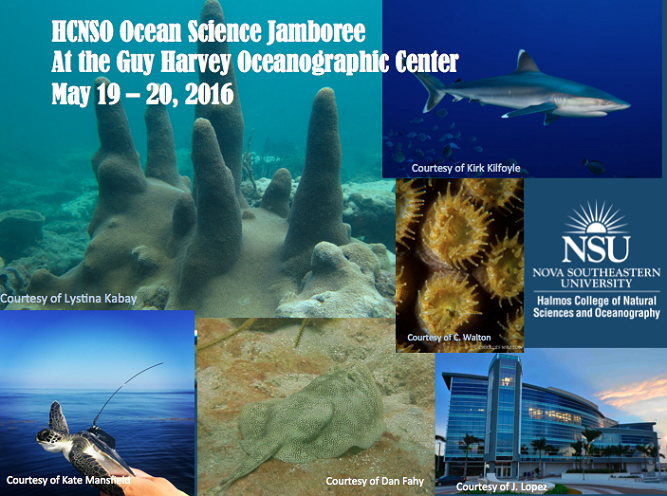Location
Guy Harvey Oceanographic Center Facility
Start
5-20-2016 10:00 AM
End
5-20-2016 10:15 AM
Abstract
Adaptations of the visual systems of deep-sea crustaceans to dim light environments are driven not only by environmental light, but also biologically produced light, or bioluminescence. In the pelagic zone, the relationship is driven, at least in part, by intrinsic bioluminescence. The unusual possession of UV sensitivity, in additional to the expected blue sensitivity, in several species of deep-sea crustaceans appears to be linked to their two modes of bioluminescence. In the benthic zone, the relationship is not so clear. On several NOAA-OER funded research expeditions, electrophysiological studies were conducted on a number of species of decapod crustaceans collected with methods that limited light damage to their photoreceptors. Most of the species studies possessed the anticipated blue sensitive visual pigment, but 3 species of chirostylid crabs and one species of caridean shrimp, collected from depths from 600-1900 m, appear to possess the unusual UV visual pigment. None of these species are bioluminescent, but all share two other characteristics – they are found in association with bioluminescent cnidarians, and they possess one or two very long claws, which the crab species are known to use to pick items (possibly plankton stuck in the mucus) off their cnidarian hosts. These data suggest that these crustaceans may be utilizing their dual visual pigment systems to distinguish between prey and host, based on spectral differences between pelagic and benthic bioluminescence.
Included in
Vision and Bioluminescence in Deep-sea Crustaceans
Guy Harvey Oceanographic Center Facility
Adaptations of the visual systems of deep-sea crustaceans to dim light environments are driven not only by environmental light, but also biologically produced light, or bioluminescence. In the pelagic zone, the relationship is driven, at least in part, by intrinsic bioluminescence. The unusual possession of UV sensitivity, in additional to the expected blue sensitivity, in several species of deep-sea crustaceans appears to be linked to their two modes of bioluminescence. In the benthic zone, the relationship is not so clear. On several NOAA-OER funded research expeditions, electrophysiological studies were conducted on a number of species of decapod crustaceans collected with methods that limited light damage to their photoreceptors. Most of the species studies possessed the anticipated blue sensitive visual pigment, but 3 species of chirostylid crabs and one species of caridean shrimp, collected from depths from 600-1900 m, appear to possess the unusual UV visual pigment. None of these species are bioluminescent, but all share two other characteristics – they are found in association with bioluminescent cnidarians, and they possess one or two very long claws, which the crab species are known to use to pick items (possibly plankton stuck in the mucus) off their cnidarian hosts. These data suggest that these crustaceans may be utilizing their dual visual pigment systems to distinguish between prey and host, based on spectral differences between pelagic and benthic bioluminescence.


